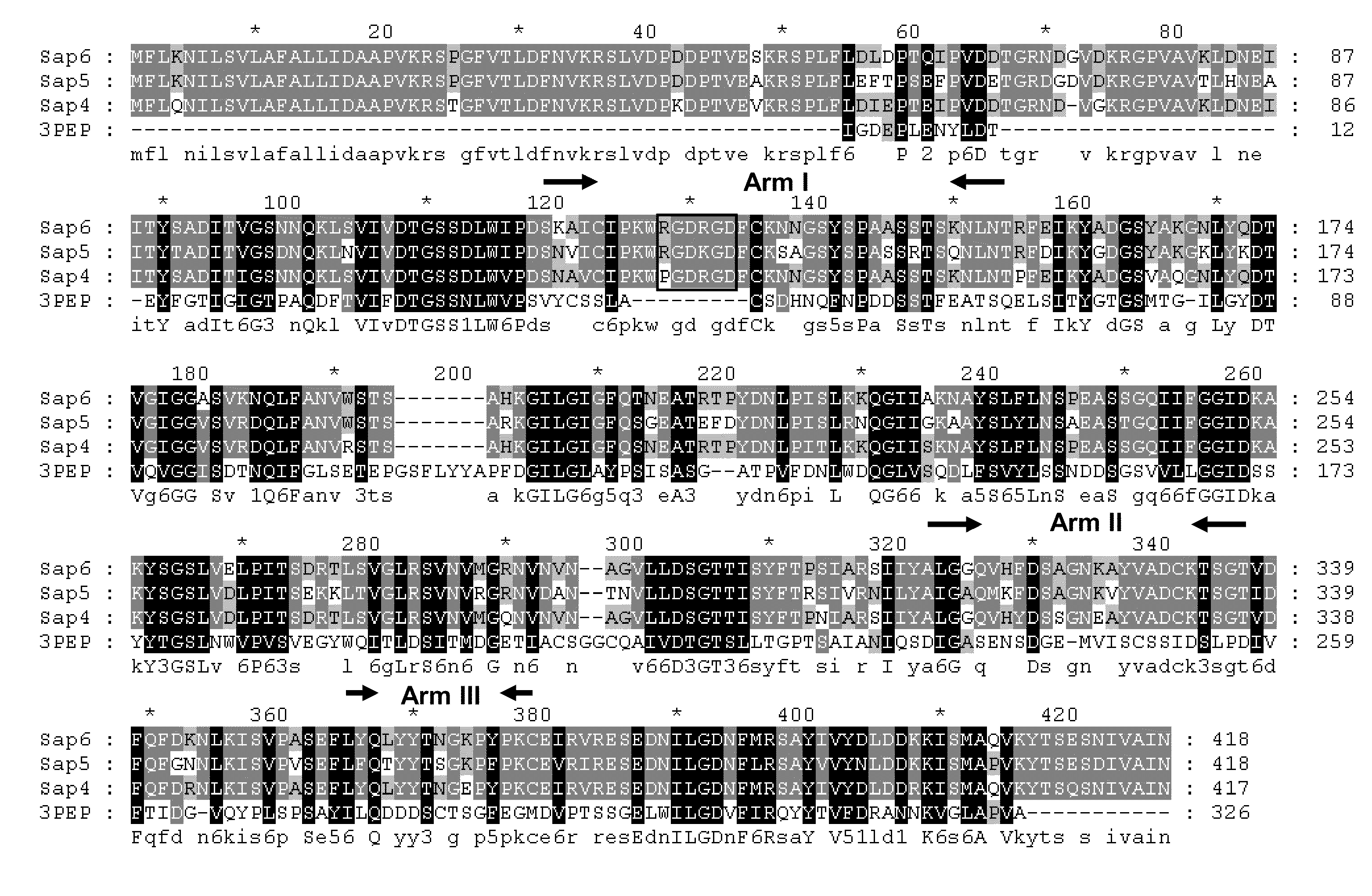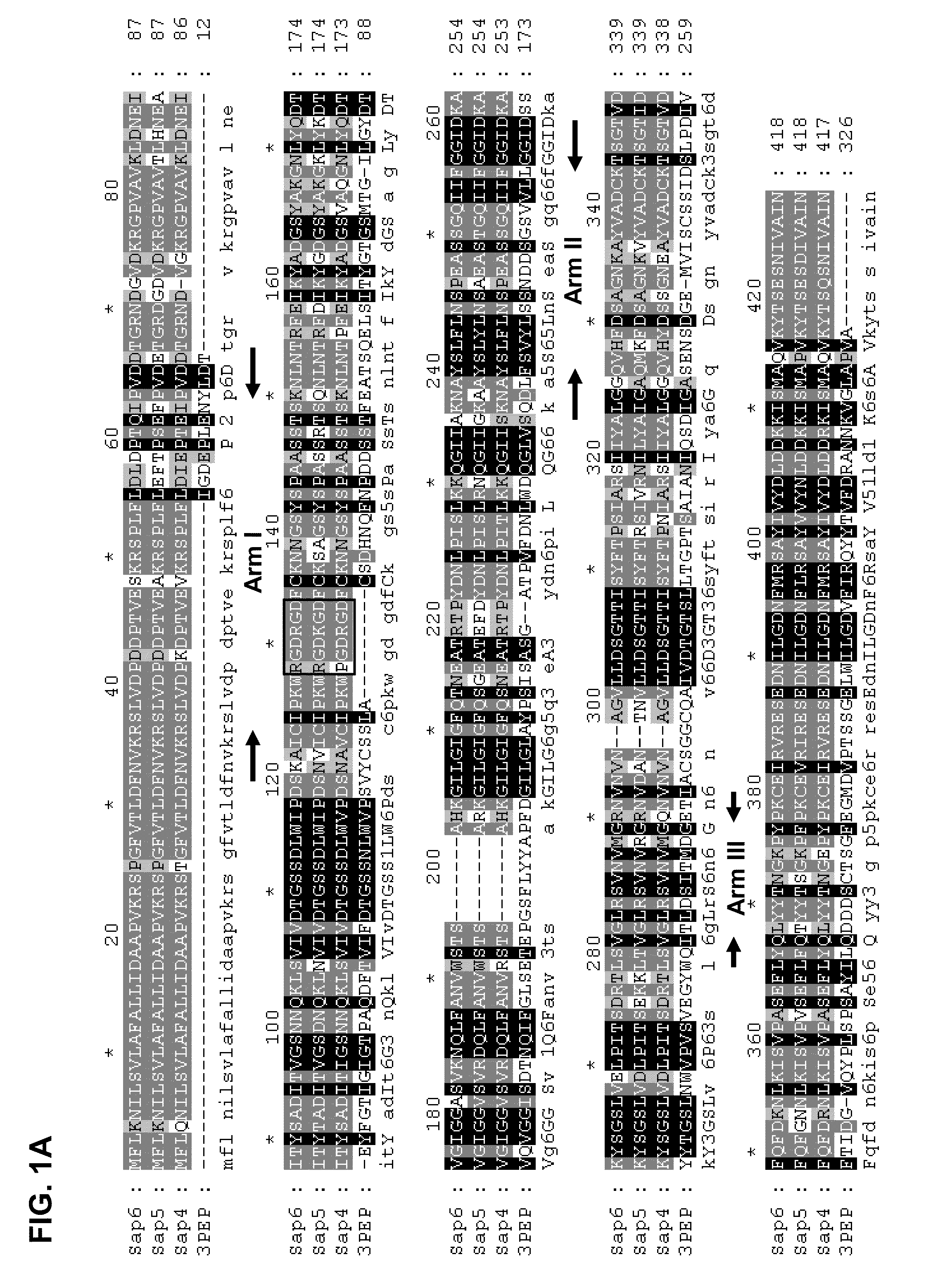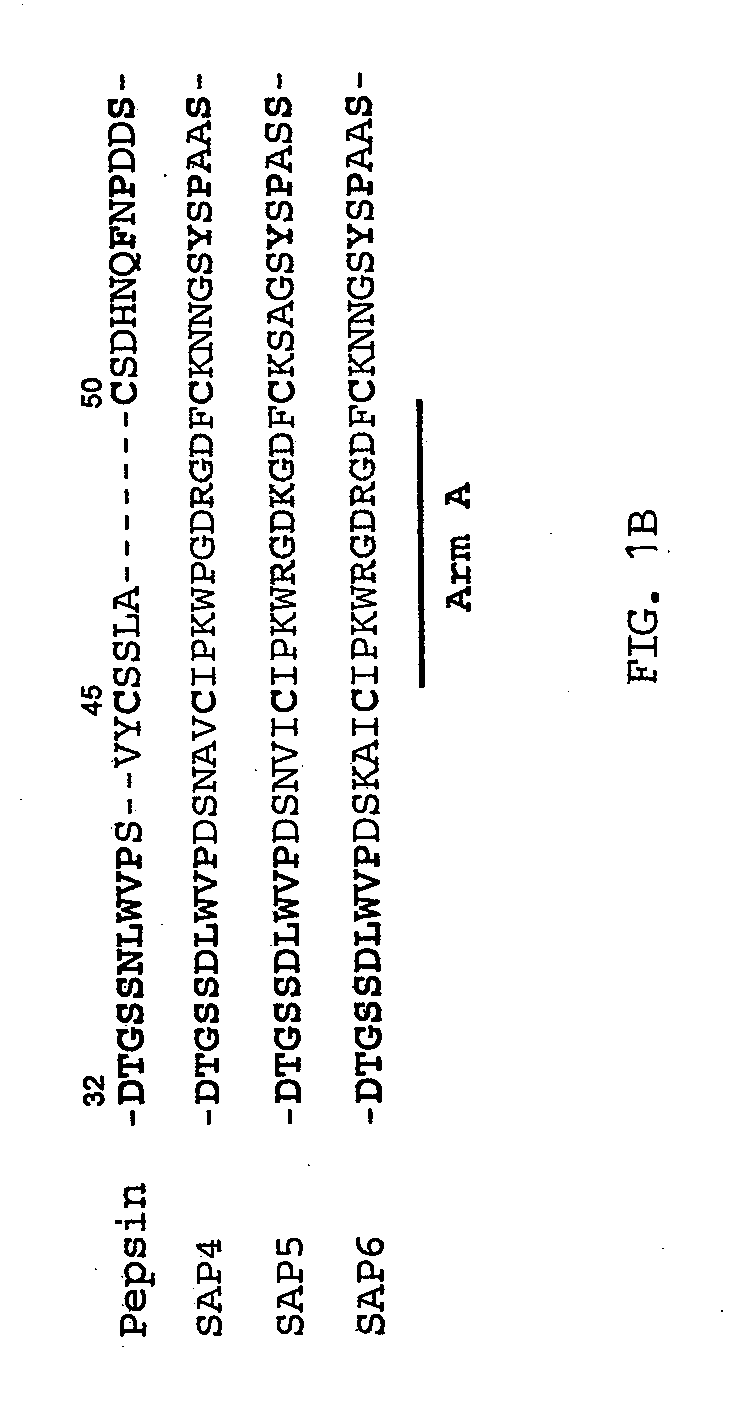Methods and Compositions for Inhibiting Fungal Infection and Disease
a technology of fungus infection and composition, which is applied in the field of methods and compositions for inhibiting fungal infection and disease, can solve the problems of severe side effects, toxic amphotericin, and narrow therapeutic index of amphotericin
- Summary
- Abstract
- Description
- Claims
- Application Information
AI Technical Summary
Problems solved by technology
Method used
Image
Examples
example 1
Arm A of C. albicans SAPs 4, 5 and 6 Contains Integrin Binding Motifs
[0130]The inventors compared the amino acid sequences of porcine pepsin with C. albicans SAPs 4, 5 and 6 by homology alignment and found that the “Arm A” in these SAPs is achieved largely by insertions of about 7 amino acids between residues 42 and 50 of pepsin (FIG. 1B). In addition, they found that these three SAPs contain a known integrin binding motif, a single RGD motif in SAPs 4 and 5, and two RGD motifs in SAP 6 (FIG. 1B). A less effective integrin binding KGD motif is also found in SAP 5. Since integrin is a cell surface adhesion protein, the inventors postulated that SAPs 4-6 can bind cells via RGD-integrin binding and such interaction may function in the virulence of C. albicans infection. They designed experiments to demonstrate the binding of these three SAPs to cells via by interaction with integrin.
[0131]RGD motif in C. albicans SAP 4-6 Subfamily. The set of structures of isoenzyme subfamily SAP 1-3 h...
example 2
Demonstration of SAP 6 Binding to Integrin on Cell Surface, then Enter the Cell and Cause Cell Death
[0133]Cellular integrin binds SAPs. As discussed above, based on the structural and functional analysis, the inventors identified an integrin-recognition motif (RGD) highly conserved in SAP 4-6 subfamily of C. albicans. The enzymes of this subfamily have an optimum pH near 5.0. It implies that SAP 4 to 6 might play a critical role on the pathogen-host cell interaction during the initial process of the adhesion and subsequent C. albicans infection, for instance, endocytic pathway in live cells and eventually apoptosis.
[0134]SAP 6 binds to Human Platelets. Recombinant SAP 6 was expressed in the yeast Pichia according to Borg-von Zapelin et al. (1998) and purified (unpublished results, Wu and Tang). Recombinnat C. albicans SAP 6 was labeled with Alexa Fluor® 488 based on the Invitrogen Alexa Fluor® 488 protein labeling kit manual. Crude human platelets were obtained from Oklahoma Blood I...
example 3
Demonstration of Subsite Specificity of Candida albicans SAP 4, SAP 5 and SAP 6
[0142]Subsite specificity of aspartic proteases, including C. albicans SAPs, are important for the design of inhibitors. Most aspartic proteases can bind 8 substrate residues in their active site cleft. The subsites in the substrates of proteases are by convention, named as in FIG. 10. For example, the inventors determined the preliminary subsite specificity of memapsin 2 (Lin et al., 2000) which led to the design of potent inhibitors (Ghosh et al., 2000).
[0143]In order to determine subsite specificity of C. albicans SAPs 4-6, the inventors incubated the purified proteases separately with globin chains (mixture of α and β chains) from bovine hemoglobin and determined that the proteins are hydrolyzed by C. albicans SAPs 4-6 (FIG. 11). They then analyzed the globin peptide fragments resulting from three digestions in MALDI-TOF mass spectrometer. The positions of the peptides in the sequence of globin chains...
PUM
| Property | Measurement | Unit |
|---|---|---|
| length | aaaaa | aaaaa |
| resistance | aaaaa | aaaaa |
| permeability | aaaaa | aaaaa |
Abstract
Description
Claims
Application Information
 Login to View More
Login to View More - R&D
- Intellectual Property
- Life Sciences
- Materials
- Tech Scout
- Unparalleled Data Quality
- Higher Quality Content
- 60% Fewer Hallucinations
Browse by: Latest US Patents, China's latest patents, Technical Efficacy Thesaurus, Application Domain, Technology Topic, Popular Technical Reports.
© 2025 PatSnap. All rights reserved.Legal|Privacy policy|Modern Slavery Act Transparency Statement|Sitemap|About US| Contact US: help@patsnap.com



